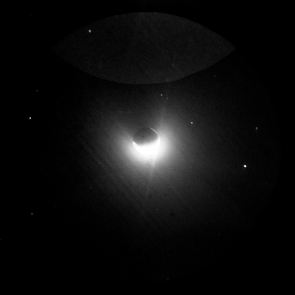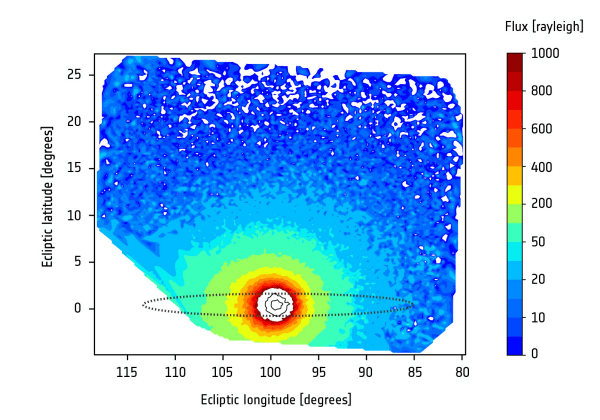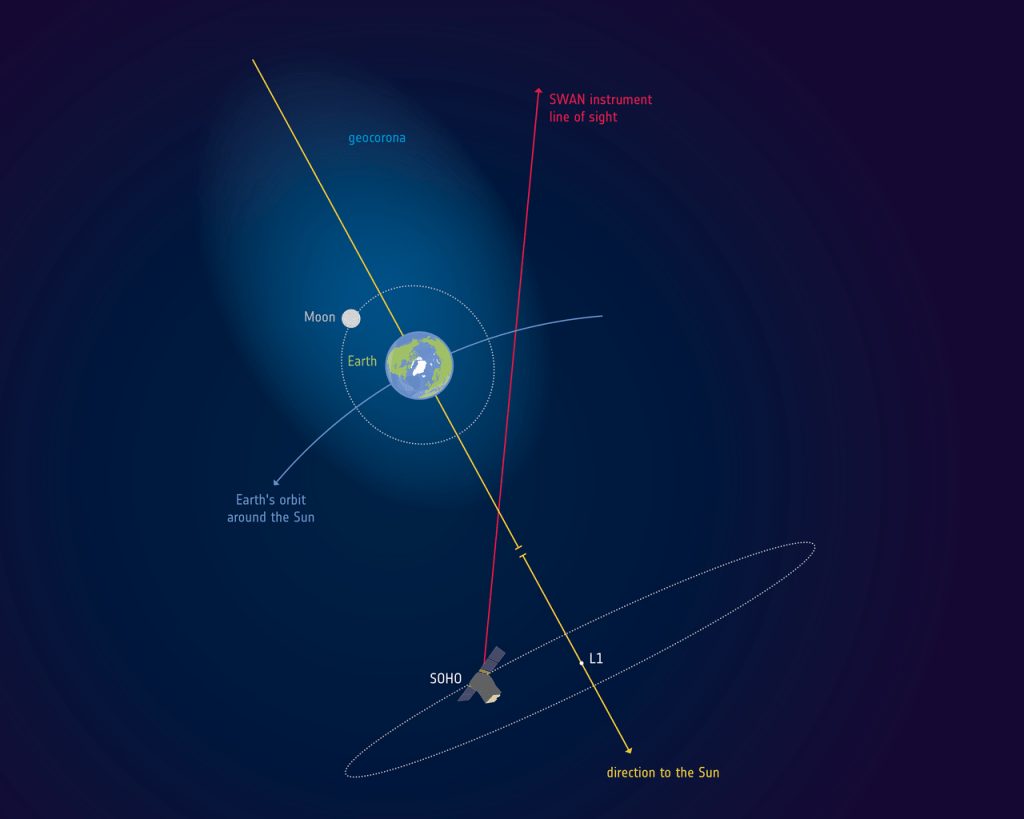Strictly speaking, there aren’t strict boundaries between Earth and space. Our atmosphere doesn’t just end at a certain altitude; it peters out gradually. A new study from Russia’s Space Research Institute (SRI) shows that our atmosphere extends out to 630,000 km into space.
The lead author of this study is Igor Baliukin. a researcher at Russia’s SRI, Department of Planets, Physics, and Solar System Small Bodies. Jean-Loup Bertaux, of LATMOS at Université de Versailles-Saint-Quentin-en-Yvelines, France was also involved in the study. The study used archival data from SOHO (Solar and Heliospheric Observatory) to find the gaseous extension of Earth’s atmosphere.
This study is all about what’s called the geocorona. It’s a vast cloud of hydrogen atoms that’s situated where Earth’s atmosphere merges with space. SOHO has 12 science instruments onboard, and one of them is called SWAN, (Solar Wind Anisotropies.) SWAN was able to trace the hydrogen signal from the geocorona and detect its outer boundaries more precisely than ever before.

Apollo 16 astronauts actually took pictures of the geocorona with the first camera on the lunar surface, in 1972. But at the time, they didn’t know they were actually still inside Earth’s atmosphere.
Igor Baliukin, Russia’s Space Research Center.
“The Moon flies through Earth’s atmosphere.”
This study is also all about what’s known as Lyman-alpha light. It’s a particular wavelength of ultraviolet that interacts with hydrogen atoms. The atoms can both absorb and emit this light. The problem is that inside Earth’s atmosphere, this light is absorbed. The only way to see the extent of the corona is from space. Even then, SWAN/SOHO observations can only be taken at certain times of the year, when Earth and its geocorona wheel into view of the observatory.
SWAN’s design allows it to measure the hydrogen atoms in the geocorona, and filter out or discard the hydrogen atoms in space.

ESA/NASA/SOHO/SWAN; I. Baliukin et al. (2019)
The scientists behind the new study found that sunlight compresses hydrogen atoms on Earth’s dayside, and it also produces enhanced density on the night side. However, that density is only relative; the dayside dense region has only 70 atoms per cubic centimeter at 60,000 km above Earth. At the distance of the Moon, there are only about 0.2 atoms per cc.

“The Moon flies through Earth’s atmosphere,” said Baliukin, lead author of the paper presenting the results. “We were not aware of it until we dusted off observations made over two decades ago by the SOHO spacecraft.”
Even though the geocorona extends far enough to encompass the Moon, it doesn’t mean it would help space exploration in any way. Though the hydrogen is an extension of the atmosphere, the density of hydrogen atoms is still so low that it’s pretty much a vacuum. But that doesn’t render this finding meaningless, not by a long shot.
“On Earth we would call it vacuum, so this extra source of hydrogen is not significant enough to facilitate space exploration,” says Igor.
But it is significant when it comes to exoplanets. For planets with hydrogen in their exospheres, water vapour is often seen closer to their surface. That is the case for Earth, Mars and Venus. That fact could be helpful when trying to determine which exoplanets might have water.
“This is especially interesting when looking for planets with potential reservoirs of water beyond our Solar System,” explains Jean-Loup Bertaux, co-author and former principal investigator of SWAN.
This extended atmosphere and the ultraviolet in it don’t pose any danger to astronauts on missions in this region of space. There is also ultraviolet radiation associated to the geocorona, as the hydrogen atoms scatter sunlight in all directions, but the impact on astronauts in lunar orbit would be negligible compared to the main source of radiation – the Sun,” says Jean-Loup Bertaux.
But it’s possible that the geocorona could interfere with astronomical observations performed near the Moon. This is something that any lunar telescope would have to consider. “Space telescopes observing the sky in ultraviolet wavelengths to study the chemical composition of stars and galaxies would need to take this into account,” adds Jean-Loup.
SOHO was launched in 1995, and has been studying the Sun for over 20 years. It’s still up there orbiting L1, even though it was designed for a two-year mission. Over its lifetime so far it has a number of “firsts” under its belt.
SOHO’s SWAN instrument observed Earth’s geocorona three times between 1996 and 1998. The team decided to retrieve this data from the SOHO archives and to analyze it further. This discovery makes us wonder what other discoveries are hidden in its archives.
“Data archived many years ago can often be exploited for new science,” says Bernhard Fleck, ESA SOHO project scientist. “This discovery highlights the value of data collected over 20 years ago and the exceptional performance of SOHO.”
The new study is published in the Journal of Geophysical Research: Space Physics.
Sources:
- Research Paper: SWAN/SOHO Lyman?? mapping: the Hydrogen Geocorona Extends Well Beyond The Moon
- ESA Press Release: Earth’s Atmosphere Stretches Out to the Moon and Beyond
- SOHO Fact Sheet

